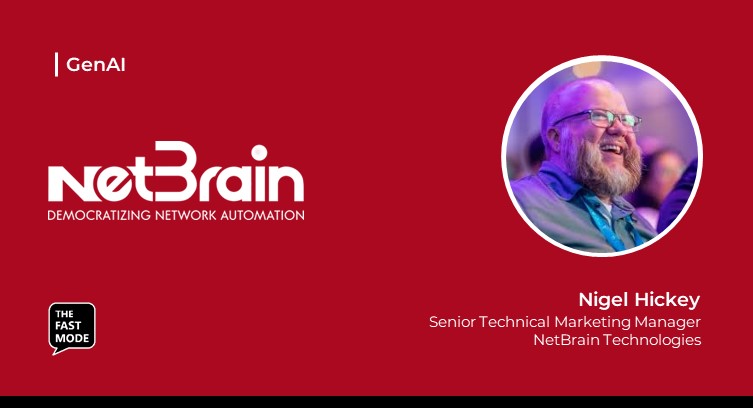
In our exclusive GenAI segment, The Fast Mode spoke to NetBrain Technologies’ Nigel Hickey on how AI and Generative AI is transforming telecom and enterprise networks, from managing network performance to mitigating threats and improving efficiency.
Networks are getting more complicated, but budgets at enterprise IT departments have remained static. The cost of mistakes remains prohibitively high, with IT downtime costing businesses as much as $7.75 million for significant outages. Despite years of effort from vendors and IT professionals to develop tools to reduce manual network management, results have been mixed. Old manual processes are not sufficient for modern networks, with network diagrams becoming outdated within days and human errors causing up to 80% of data center outages.
Unlike traditional AI that focuses on classification or prediction, generative AI can create new configurations, automate processes, and simulate various scenarios in network environments. This capability opens up a new realm of possibilities for network operations teams, particularly when integrated with network automation platforms such as NetBrain.
Challenges with building GenAI into network operations include:
- Explainability: Engineers need to trust AI-driven decisions and understand how AI comes to the solution.
- Contextual Data: AI must operate on real-time, accurate network models. Operating on incomplete or outdated data, it could generate inaccurate recommendations.
- Human Governance: AI needs policy-driven guardrails. AI shouldn’t have free rein to execute network changes without human approval. Especially in mission-critical environments.
To overcome these obstacles, it is crucial to adopt automation along with AI. Low-code and no-code platforms now empower network experts without programming expertise to create automation solutions, making its advantages accessible to a wider audience. Automation and AI together drive operational efficiency by:
- Speeding up troubleshooting: Automating routine fixes allows SMEs to share their expertise across the organization, enabling less experienced engineers to address recurring issues quickly.
- Preventing configuration drift: Automated checks of router settings, access controls, and failover readiness ensure network consistency without requiring manual intervention.
- Reducing human errors: Automated pre- and post-change verifications lower the risk of mistakes during configuration changes, a leading cause of outages.
Ultimately, successful AI and network automation hinges on leadership buy-in, adequate funding, and staff training. With these foundations and integrated tools, NetOps teams can adapt to modern networks’ demands, driving efficiency, scalability, and cost savings across the organization.
This article is a part of The Fast Mode’s 2025 Special Edition: GenAI segment. To learn more about the segment, visit the dedicated page here. To view all articles published under the segment, click here. A research report based on the findings of the segment survey will be published in February 2025. To access the survey, click here.
The views expressed in this article belong solely to the author and do not represent The Fast Mode. While information provided in this post is obtained from sources believed by The Fast Mode to be reliable, The Fast Mode is not liable for any losses or damages arising from any information limitations, changes, inaccuracies, misrepresentations, omissions or errors contained therein. The heading is for ease of reference and shall not be deemed to influence the information presented.





